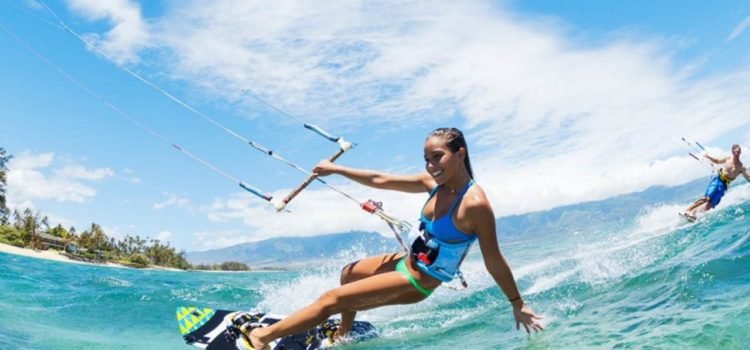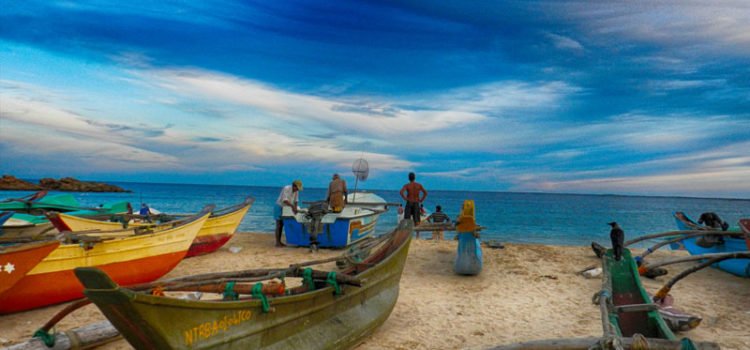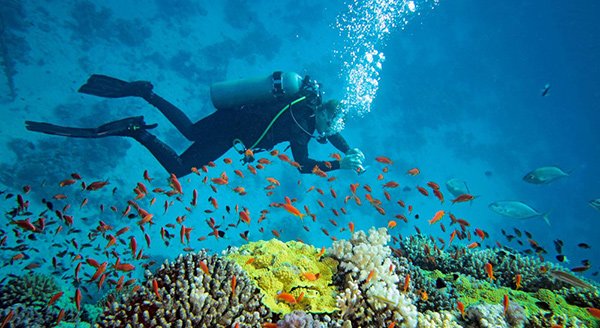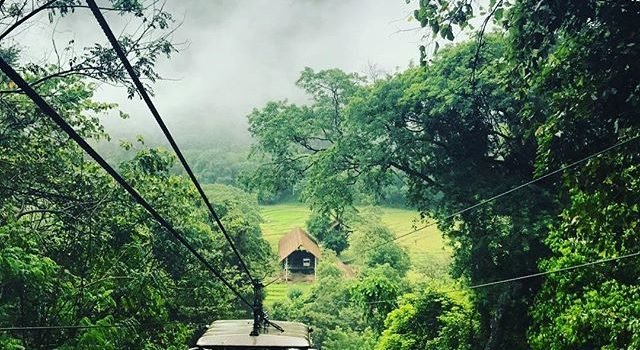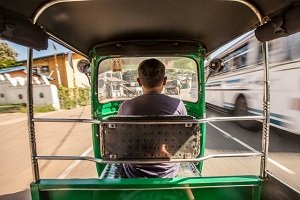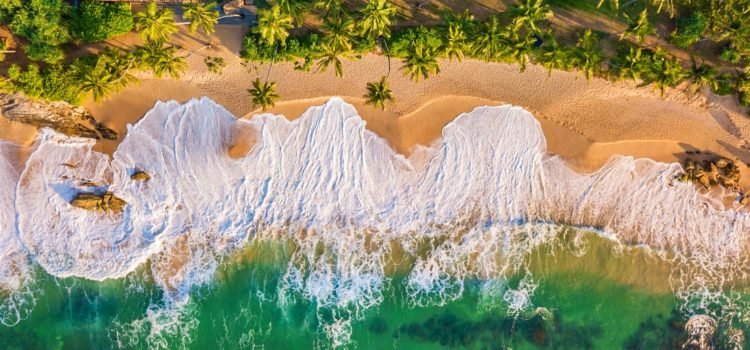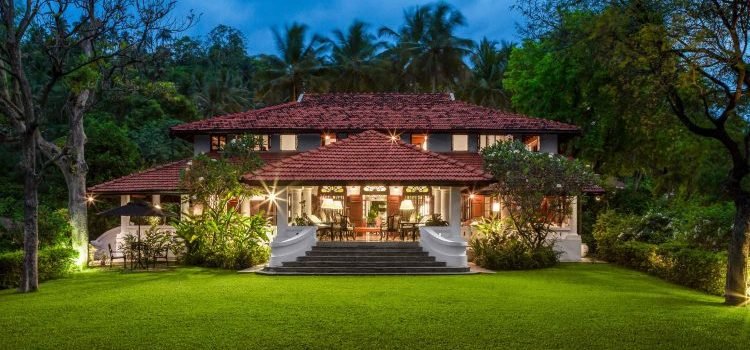Top Water Sports in Sri Lanka
The island of Sri Lanka is made up of surrounded by the seas where water sports activities are carried out. Make it possible for us speak regarding which types are highest enjoyable and what is the easiest location in just Sri Lanka towards delight in every single water sport.
Surfing
If on your own are seeking towards surf sand-bottomed fact breaks all working day extensive inside of 30 levels vivid and dazzling temperature, Sri Lanka is the destination in direction of being.
Browsing is even further of a interest or a satisfaction video game that is relished via numerous. Toward getting pleasure from browsing the greatest, by yourself require in direction of being upon a beachfront that includes eye-catching crashing waves that yourself can surf versus. Of training course, within just the video game of browsing, endurance is of highest worth as oneself incorporate in the direction of being reluctant for the wave. Moreover, by yourself really should be prepared in the direction of choose options at enormous waves and retain serene if within situation elements order occupied.
Arugam Bay, within just the east coastline, is the wanted position for a browsing trip in just Sri Lanka. Hordes of surfers, primarily towards wave-starved Ecu nations around the world take pleasure in the ripples upon the shoreline. Within just this Room, on your own will identify surfers generally in just the intermediate wide variety nevertheless if oneself are a newbie, browsing classes are offered toward assistance yourself out. June in direction of Oct is the excellent season toward paying a visit to locations which include Passikuda and Arugam Bay for browsing upon the east coastline. Puts which include Unawatuna inside of the south-west coastline are on top of that distinguished for browsing throughout the weeks of November to May possibly.
Jet Skiing
Jet snowboarding is rather considerably together with an engine motorbike trip, nonetheless upon h2o! The thrill of using an engine motorbike upon h2o can just be known all through a Jet Ski experience within Sri Lanka. Jet snowboarding is prospective inside numerous areas of the island, like east, west and south coastline shorelines as nicely as guy-manufactured lakes lagoons about the state.
A water video game associate is guaranteed to love drenching themselves upon a jet ski even though negotiating with the drinking water actions and functioning air-water jumps. Yourself can investigate deep into the ocean if on your own are certainly sufficient upon a jet ski although far too creating fast actions in close proximity to huge waves.
Bentota inside of the south-west coastline includes a drinking water athletics center that specials jet snowboarding. Inside of addition in the direction of that, Unawatuna seaside, Negombo seashore, Negombo lagoon, Kalpitiya seaside, Passikudah seaside and Gregory Lake inside of Nuwara Eliya are a handful of destinations within just Sri Lanka wherever jet snowboarding is notable.
Kite Surfing
Kitesurfing is an adventurous recreation that brings together the particulars of skiing, windsurfing, browsing, paragliding, and gymnastics into just one game. An enormous electricity kite is demanded toward harness the wind ability and assistance. This is hooked up in direction of a kiteboard upon which the surfer has retained enterprise with the aid of foot straps.
Because of toward its regularly windy diseases and the slim sandbar that separates the lagoon towards the ocean, building suitable waters, us citizens take pleasure in kitesurfing inside of Kalpitya. Not simply just does Kalpitiya comprise the perfect seaside for kitesurfing, it, in addition, includes a line of educational institutions that will supply on your own with the instruments and prepare yourself how toward kitesurf. After yourself take the dangle of the game, yourself will not need to go away the drinking water and neither will yourself need towards allowing the move of your kitesurfing machines. An addictive activity in truth!
Scuba Diving & Snorkeling
Snorkeling and scuba diving are extremely very similar pursuits throughout which by yourself can take a look at the maritime lifestyle in excess of the island of Sri Lanka. Instruments these types as masks, fins, and snorkels are offered by way of the center, alongside with an expert who will swim close to with by yourself. Pigeon island inside Trincomalee, Hikkaduwa Unawatuna seashore and Kalpitiya beachfront are a couple of puts wherever yourself will obtain the providers of snorkeling. For the duration of your snorkel working experience within Sri Lanka, be created in direction of keep track of attractive tropical fish and coral reefs that adorn the deep seas.
Deep Sea Diving
The dilemma you in direction of partaking within just this excessive match of descending into the deep waters of the Indian Ocean, of study course with the assistance of respiration equipment and a direct in excess of your self at all days. Batticaloa, Nilaveli, Negombo, and Unawatuna are distinguished locations for deep sea diving in just Sri Lanka.
Sailing
The ocean is Sri Lanka’s essential instrument. Check out Sri Lankan coasts in just design with a sailing cruise. Oneself might make a decision possibly the east, west south or north coastline toward examining based upon which period of the 12 months that on your own are traveling to. With a sailing trip by yourself contain achieve in direction of magnificent surroundings and pristine shorelines. Sailing as a match is moreover offered inside Sri Lanka inside of destinations which includes Bolgoda Lake, North-East coastline, and Southern coastline.
Whitewater Rafting
The interesting Kelani River inside of Kitulgala, Sri Lanka is whereby the fascinating game of white drinking water rafting normally takes destination. Move with a neighborhood of 3-6 These and a person of a lot of rafting support solutions will assist by yourself with the important resources and advisor on your own upon how towards maneuver your boat upon the rapids and minors of the river. Self-esteem jumps, circulation slides and river tenting are too some functions that oneself can appreciate below.
Traveling to Trincomalee
Trincomalee is one of the finest natural deep water harbours in Sri Lanka and it is located 257 km north-east of Colombo and considered as a commercial hub of Sri Lanka. Trincoamlee is home for some of the finest beaches of Sri Lanka. Beaches like Nilaveli, Uppuweli and off shore Pigeon Island makes it’s a major tourist attraction for the beach lovers of Sri Lanka. Trincomalee had its own whale watching places in the Indian Ocean and becoming popular day by day. The beaches in Trincomalee and its crystal clear water offers tourists diving, snorkeling and swimming. Trincomalee is studded with a multitude of ruins of ancient Buddhist temples and is considered a major Buddhist cultural and archaeological site of Sri Lanka and same time its home to some of ancient Hindu Temples such as “Koneshwaram”. The Hot water springs of Kinniya is merely few miles away from Trincomalee. Trincomalee is basically a one stop tourist hotspot of Sri Lanka.
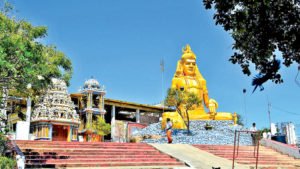
Trincomalee Beach
Trincomalee also known as Gokanna is the administrative headquarters of the Trincomalee Districts and major resort port city of Eastern Province of Sri Lanka.Trincoamalee beach is one of the natural finest deepwater harbours in the world. The Trincomalee area was most known in Anuradhapura and Polonnaruwa Period as a port which attracted persons like “Marco Polo” and “Ptolemy.
Other than that there is the Fort Fredrick that was built by the time of British Empire and it’s in the prefect shape to this day. The famous Lovers leap rock is inside the. As for the religious monuments the “Koneshwaram” Hindu Kovil is there it’s one of the oldest Hindu Kovils of the Island.
If we speak about the beaches in the Trincomalee they are wide clean and water is crystal clear and most famous and place that is not to miss is Marble Beach of Trincomalee . About 16 km further north you’ll find yourself in “Nilaweli” beach with the famous Pigeon Island, the corals around the island is a great place to snorkel in our opinion and red rocks lying just 2 km offshore are reachable by small boat. The village of “Kanniyai” holds 07 wells that contain water from moderately warm water to very hot they are famous for their medicinal properties.
In our opinion Trincomalle has everything on offer whether it be a beach stay, diving to a shipwreck, snorkelling in crystal clear water, whale watching across the bay, kite surfing all this in city built on a headland, which naturally protects the massive harbour behind it, also a naval station of Sri Lanka navy.
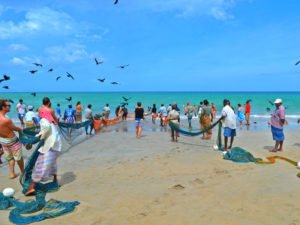
Pigeon Island Snorkeling
If you are a snorkeling enthusiastic this is one of best places in Sri Lanka to indulge in water activities. Pigeon Island is nested coastal shore of Eastern province of Sri Lanka.The Pigeon Island National Park is one of the best places where corals grow. The name comes from a large number of rock pigeons used to inhabit the island. The island was declared as a sanctuary in 1963 and upgraded to a national park in 2003.
You can reach Pigeon Island from Nilaveli from about 15 minutes from a boat with a boat trip operator. As a result of being located in Nilaveli Tourist attraction point tourist who comes to Nilaveli never forgets to visit Pigeon Island. Dive and Snorkel in the seas of Pigeon Island which is full of vivid colour corals and fish. As you snorkel in the Pigeon Island sea you will see green turtles, blacktip reef sharks, olive ridleys and hawksbill turtles swimming over the coral reefs. Today the islands have been identified as a breeding place of the pigeons, therefore, the zone is administrated and conserved by the Sri Lankan navy and the department of wildlife conservations.
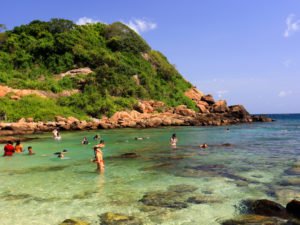
Catamaran Sailing Trip In Trincomalee
Set out on an ultimate catamaran trip in pristine beaches of Nialveli. After getting on board you can head to pigeon island National park which is a marine park where there is great underwater scenery, sunny weather and ideal wind conditions. You can go snorkeling, paddle boarding, surf or just have a sunbath . It’s a lovely way to start the day if it’s a day tour and probably a good way to end the day if it’s a late evening trip.
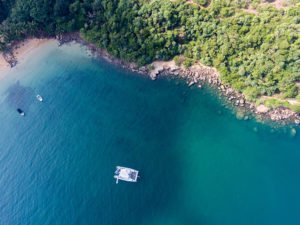
Bird Watching in Bundala National Park
December is a great month to travel through Sri Lanka. The monsoon winds die down, leaving the weather sunny, hot and dry across the island. Even in years when the monsoon season continue into the early days of December, the rainfall only occurs at night, helping to freshen the mornings and thicken out the lush green landscapes, making it an exceptionally beautiful time to enjoy the rural parts of Sri Lanka and providing ideal conditions for Sri Lanka’s birdlife to thrive.
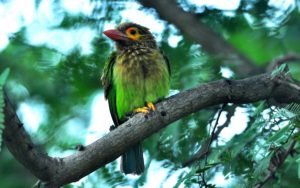
If you take great pleasure in bird watching, Bundala National Park is the place to go, especially between December and April as this is the park’s peak season. Beautiful lagoons, mesmerising waterways, thorny scrub jungles and dazzling dunes make Bundala’s landscape particularly eye-catching. It is home to 200 species of vibrant birds, ranging from little little Bee-Eaters to the extraordinary Open-Billed Storks.
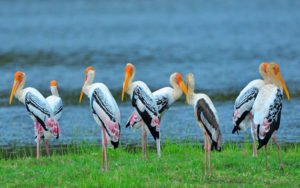
The rare Black-Necked Stork and the Great Thick-Knee are usually a main highlight. Spotting the Blue-Tailed Bee-Eater, Spoonbill, Red Shank, Green Shank, Spot-Billed Pelican, Blue-Faced Malkoha, Brahminiy Kite, Crested-Hawk Eagle, and the Brown Strikes are easy. Bundala National park is also a winter home to the Greater Flamingo, which can be seen between September and March.
Bundala National Park is also home to a very few but evident population of elephants (between 15 and 60) as well as civets, Sloth Bears, Giant Squirrels and lots of crocodiles. Leopard sightings are very rare, but if you’re lucky you might spot one preying on the numerous Spotted, Barking and Sambar Deer that rove around Bundala.
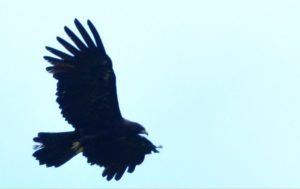
The park stretches nearly 20km along a coastal strip between Kirinda and Hambantota, approximately a five hour drive from Colombo along the coast. This park is frequented by far fewer tourists that nearby Yala National Park, and is open all year round. A jeep safari through Bundala’s beautiful surroundings, with spectacular views around every corner and the promise of many animal sightings, is a must if you are travelling to Sri Lanka’s Deep South or south-east coast.
The Sri Lankan Leopard
Covered in dark spots set in a tawny coat of fur, the Sri Lankan leopard stealthily walks about surveying his surrounding for his next meal, unaware that scores of wildlife enthusiasts are driving around the Yala National Park in the hope of spotting him.

Recognised as one of the island’s most prized treasures, the Sri Lankan Leopard is an endangered sub-species native to the island. First described in 1956 by renowned local Zoologist Dr. Paulus Edward Pieris Deraniyagala, the Sri Lankan Leopard (scientifically known as Panthera pardus kotiya) can be found in different habitats including montane forest, tropical rainforest and arid scrubland.
Leopards are the largest predator in Sri Lanka’s wilderness, as there are no other big cats such as lions and tigers. The Leopards vary in colour, from straw-yellow to bright golden brown, spotted with black spots and rosettes. They are mostly sighted in the Yala National Park located Deep South of Sri Lanka, which has one of the highest densities of leopards in the world.

These solitary hunters are highly adaptable predators – whilst they prefer hunting at night, they are also active during dawn and dusk – and are usually seen alone. However, social groups (such as mothers and cubs) and courting pairs are spotted more commonly in Yala National Park than in other leopard populations. Both sexes live in overlapping territories, with the ranges of the males overlapping the (smaller) ranges of several females. Like most cats in the wild, the Leopard’s choice of prey includes smaller mammals, reptiles, birds and some larger animals including buffalos and wild boars, with a special emphasis on Spotted Deer which are found in abundance in the dry zone.
Classified as an endangered species by the International Union for Conservation of Nature (IUCN), the leopard population in Sri Lanka is under threat as a result of habitat deconstruction, forest fragmentation, trapping and hunting.
Although several research programmes have been conducted on Sri Lankan leopards, there’s still much to be studied on the status, ecology and behaviour of this feline. Leopard Trails, a Sri Lankan company which offers bespoke luxury tented camping near Wilpattu National Park and Yala National Park, has devised its own method of identifying leopards during the many safaris they organise for their guests, in the hope of documenting the life stories of these creatures.
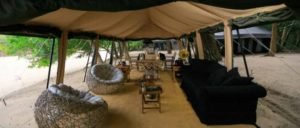
Wildlife aficionados at heart, the founders of Leopard Trails have been working on methods of identifying the Leopards that are found in Block 1 of the Yala National Park, which is known for having the highest concentration of leopards in the island. Their previous method of using a Leopard’s forehead pattern, although accurate, was harder to document, and was sometimes susceptible to change when cubs grew into adults. After frequent visits to Londolozi, a private reserve in the Sabi Sand in South Africa, they witnessed the ‘spot pattern ratio identification technique’ being conducted successfully, and implemented the same method in Yala.
Leopard Trails has now managed to identify 55 leopards living in Block 1 in Yala with information on their sex, lineage, places sighted and roaming areas. Each identified leopard is named after its spot ratio and the name of the place where they were first sighted. Some even have nicknames, given to them by the Leopard Trail Game Rangers.
Leopard Trails hope that they will be able to use this information on Sri Lankan Leopards to contribute to the conservation and protection of these species.
Scuba Diving in Sri Lanka
Sri Lanka has several fantastic scuba diving spots along its west and south coasts, as well as some in Trincomalee in the north-east. From mysterious shipwrecks and distinctive rock formations to a variety of marine life, including numerous species of brightly-coloured tropical fish, eels, marine turtles and sting rays, exploring the island’s underwater world is highly rewarding. Below we have outlined the best dive sites between Kalpitiya in the north-west and Sri Lanka’s southern-most point. This stretch of coastline is in season from November – April.
Weligama
Situated in the Deep South, Weligama is excellent for snorkelling and diving with beautiful undersea rock formations and a variety of marine life. The dive sites include Mirissa Point, Bridge Rock, Yala Rock, and Prince Heinrich Patch. There is also a 40km reef known as The Basses which starts 20km south east of Kirinda and extends right below Kumana. With sandstone reefs, ravines, pillars, pinnacles, caves, crevices and ship wrecks, The Basses is considered the best diving site in Sri Lanka.
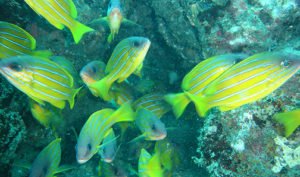
Unawatuna
Diving in Unawatuna is fascinating, with diving sites consisting of rocky formations and black coral, many ship wrecks and numerous varieties of fish.
Hikkaduwa
Hikkaduwa is an interesting youthful coastal town and has about 20 dive sites within easy reach. There are also PADI dive centres, so if you’re staying in Sri Lanka long enough you could get your license here. A deep rocky formation called Deep Rock, Kiralagala, and the ship wreck Conch are interesting dives.

Negombo
Diving sites are divided into two sections in Negombo – closer dive sites, which are within 8km from the shore, and Third Reef which is about 22km from the beach. In all sites, numerous species of fish, marine turtles, Moray Eels and sting rays can be spotted.
Kalpitiya
February through April is the best time for diving off Kalpitiya. The Bar Reef that surrounds Kalpitiya has intricate nooks and crevices and is ideal for spotting Moray Eels, large Grouper Fish and Sting Rays.
Sri Lanka’s cable car is Ella’s best kept secret
Sri Lanka’s hill country offers thrills, excitement and inspiration to all. But in Sri Lanka an exciting cable car ride was the last thing on my mind. Little did I know I was about to hop onto a cable car and soar through the skies.
Our destination on a cold morning was Ella Jungle Resort – an oasis of serenity tucked away in a quieter part of Ella and surrounded by a thick canopy of jungle. From the entrance of the resort, transport in a four-wheel jeep is preferred. So, we hopped on a jeep and set off on our way. The road leading to the quaint resort began smoothly. As we progressed further, however, it became rugged and bumpy.
Bend after bend, I held on to the seat as the jeep swerved, enjoying every moment. I was stunned when I saw a drifting cable car as our driver stopped the jeep in front of a small wooden platform. The road had come to a dead end so he had no choice. He signalled us to get off and directed us to the wooden platform.
Intrigued, I watched the cable car gliding slowly towards the platform where we were standing. Soon the little cabin came to a grinding halt. High above us, a happy couple jumped on to the wooden platform, bidding adieu to Ella Jungle Resort.
Finally, it was our turn to ride the cable car – my very first time. Excited like a kid anticipating an adventure, I quickly hopped on. But the moment I looked down, I could feel a little adrenaline rush coursing through my veins. The vast expansion of the canopy looked like a giant patchwork quilt of various shades of green.
Once the three of us were comfortably seated, the guy in charge of the cable car joined us and closed the little side door of the cabin. As our journey began, we were awed by the picturesque view of the silvery Kirindi Oya snaking amidst the greenery. My cheeks blushed against the cold breeze and my hair danced in the air. We were thrilled as we effortlessly floated through the thin air.
The cable car steadily glided above the Ella jungle and we spotted another empty cabin moving towards the opposite direction. The two-wire cable line stretches across 400 meters and is the only one of its kind in Sri Lanka. The only way to reach the resort is to take the cable car, which comes totally free of charge.
To our dismay the lobby of the resort appeared quicker than we would wished and I reluctantly stepped out of the cabin. A bright-eyed man sat in front of a massive crown wheel facing the entrance of the reception. He greeted us with a warm smile and introduced himself as the cable car operator.
Having visited so many hotels in my life, I must say it was a novel experience to walk into a lobby housing a cable car operating base. As the cable car operator explained, for over two decades the two manual cable cars of Ella Jungle Resort have been drifting back and forth to carry their discerning guests.
Excited by the prospect of taking the cable car ride again, we walked past the lobby to explore the beautiful nature resort. The best kept secret in Ella: this is sure a thrilling experience that should not be missed.
A Tuk-tuk Adventure
Though I was born and bred in Sri Lanka, this little teardrop shaped island does not fail to amuse me every single day. It was a boring Sunday afternoon and my curious little mind was up to no good. Just like those sudden cravings for a mug of steaming hot chocolate, I was desperate to explore Colombo in a tuk-tuk and gobble up some yummy isso vadei.
Soon I was whizzing along the Independence Avenue zig zagging past throngs of vehicles. I had a rough route in mind and my tuk-tuk driver was an easygoing chap. We turned off at the junction and our first stop was the Independence Square.
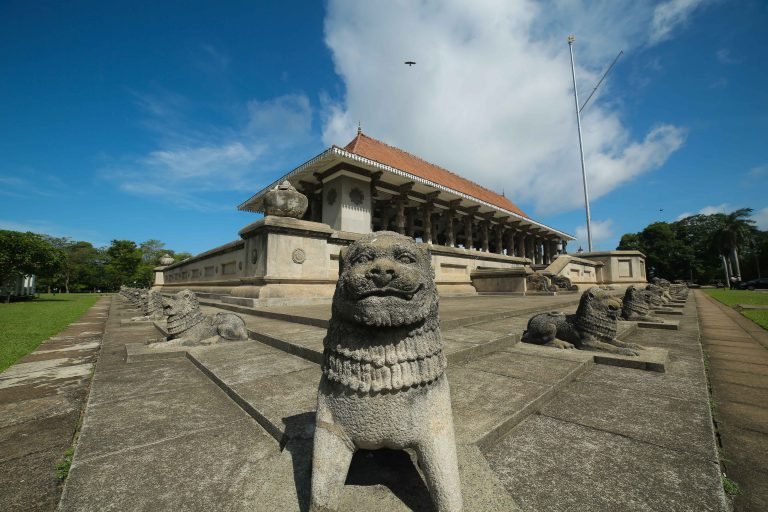
The stately Independence Square
The sun was bidding adieu to the day casting a golden glow on the city. Flanked by elegant lions, the Independence Square is one of those places where memories of the country remain enshrined for all time, in monuments of stately beauty. The Independence Memorial Hall is built in the centre of the premises, marking the site where the island gained independence from British colonisers years ago.
Like a lost child, I wandered into the lush greens of the Independence Square and sat awhile to indulge in this oasis of serenity in the heart of Colombo. Here’s the pro tip: if you ever want to spend some time away from the hubbub of the city, just head to the Independence Square, you’d be surprised.
Happy teenagers were racing each other with glee, making me want to dust off my own cycling gear and pedal by the lanes; maybe next time though, because this was supposed to be my tuk-tuk adventure. So I motioned my tuk-tuk to pick me up and was back on the road. We tuk-tukked along the bustling streets and stopped at the Gangaramaya Temple, which was my next stop.
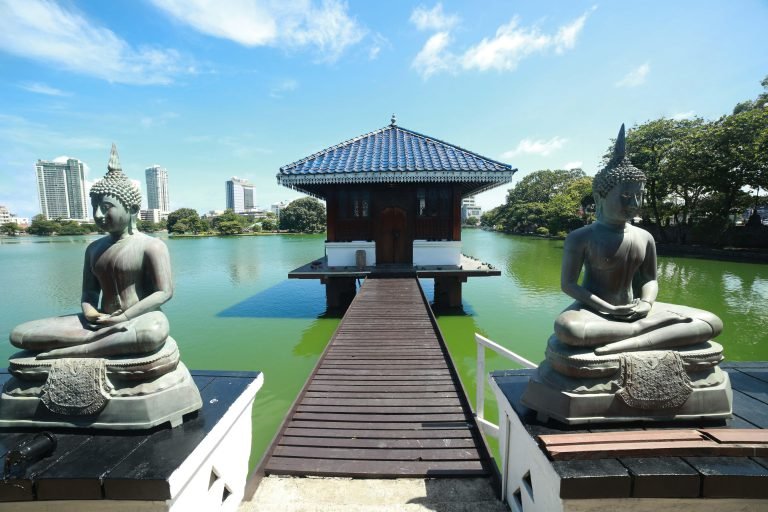
The serene Seema Malakaya on the Beira Lake
As I entered the temple grounds, a blanket of tranquility spread over me, which seemed to foretell the peace and serenity I would find within the premises. The architecture of the temple represents the old and the new along with East Asian influence. I walked towards the museum of the temple, where amidst shelf upon shelf of intricate statues, dazzling tiny ornaments and beautiful marble work, for one bewildering second I felt like Aladdin on his quest to find the magic lamp. There are objects d’art to feast the eyes on from the floor to ceiling!
I walked out of the temple and towards the Seema Malakaya, which belongs to the Gangaramaya but is located across the road, on the Beira Lake. It’s the kind of place that draws you in, and once inside, it’s hard to leave. The hustle and bustle of the outside world grinds to a halt. Unwillingly, I decided to hit the road again and head to my next location- Pettah. If you ever enjoy being jolted out of yourself even for a few minutes, Pettah may just do that for you.
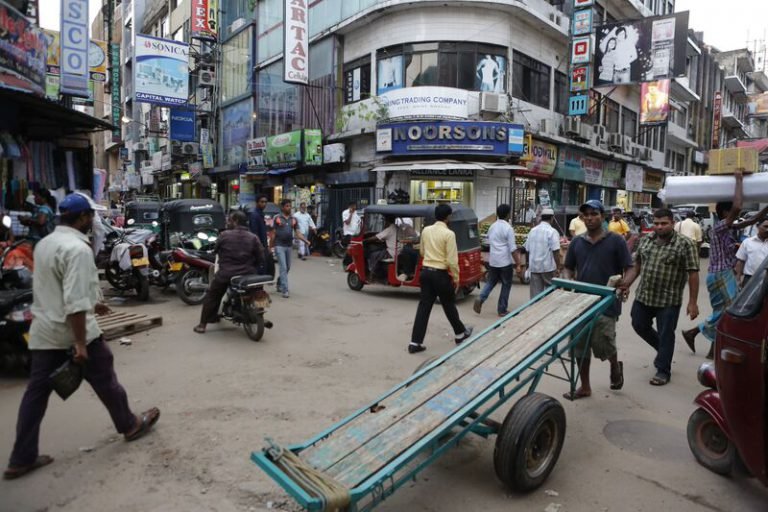
Pettah-a hive of activity
I hopped off the tuk-tuk and made my way to Pettah market. The closer I came to the thriving trading areas, the thicker the traffic and the number of people walking on the streets. It is an area of sensory-overload. You must walk along its streets to realise the amount of activity that goes on, which is far more than any other area on the island.
Half way through the street, I was overwhelmed by a crazy range of noises, aromas and continuous movement. From groceries to fabrics, spices to cooking utensils and sweets to toys, Pettah has anything and everything. Amidst all of its clutter, there is a sense of meticulous space allocation. Products are clustered into various areas within the small lanes that stem from the Main Street.
I was stunned to catch a glimpse of a mosque with candy-striped pillars in the midst of this economic nerve centre of the island. Locally known as the Red Mosque, this eye-popping building was built in 1908. Architects claim the Red Mosque aka Jamiul Alfar Masjid to be reminiscent of the Jamek Masjid in Kuala Lumpur, Malaysia. Being an avid Instagrammer, I did not forget to stop by to take a quick selfie to spice up my Insta feed.
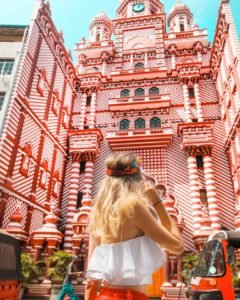
The vibrant Red Mosque in Pettah
Tired yet satisfied, I left the vibrancy of Pettah. If you wish to walk the streets of Pettah, make sure that you are guided by a local. As mentioned it’s a maze of streets, and it’s not easy to crisscross these streets, unless you are familiar with the local neighbourhood.
The grand finale of my tuk-tuk ride around Colombo was the Galle Face Green because crazy as I was, I still wanted to grab some isso vadei – prawns deep fried on a crispy batter. Trust me, even the fine dining aficionados will be tempted to take a quick bite of this island favourite.

Isso vadei is a salty treat!
As the evening drew to an end, the city was illuminated with street lights and was as busy as ever. With a paper bag full of crunchy isso vadei from the Galle Face Green, I hopped back into the tuk-tuk and headed home as happy as a pig in mud.
Five best beaches in Sri Lanka away from the crowds
Hiriketiya
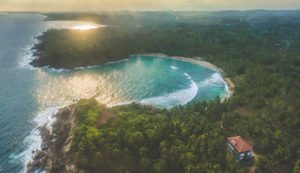
Hidden along the South Coast, amongst swaying palms and clifftops, this secluded cove is ideal for surfers, although only hardy surfers would dare to approach the rougher waves at the edges of the inlet.
Also known as the “Blue Beach”, Hiriketiya remains off-the-radar due to its small size and remote location. The clear blue water is shallow and protected by two headlands and is great for a refreshing dip. This secret clove is now rapidly becoming more known as Conde Nast Traveller has named it the lastest nomad hotspot in srilanka.
Getting there: Hiriketiya is only a kilometre or so from Dickwella. A tuk-tuk ride from Dickwella is the easiest way to visit the beach. You can also catch a regular bus from Matara/Tangalle from around 6am until 6.30pm as all pass through Dickwella.
Polhena
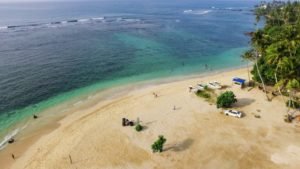
The beautiful beaches in Matara can be overrun in the peak-season but Polhena is a charming sandy cove and, surprisingly, never too busy.
An offshore reef barrier stands like a giant to protect Polhena from rough waves. Thus, the sea is super calm and shallow. The vivid-blue-green of the water against the golden sands create picture perfect moments.
Interestingly, the beach is dotted with tiny pieces of corals that wash ashore every now and then. Polhena is an idyllic spot for snorkeling to discover its kaleidoscopic spectrum of vibrant tropical fish and corals. The beach is extra quiet on weekdays. Polhena is one of the safest beaches for kids.
Getting there: Polhena is a 2km drive from Matara town. A tuk-tuk ride from Dickwella is the easiest way to visit the beach. Or else, you can simply drive on your own. The easiest route is via Sri Dharmarathna Mawatha and Colombo-Galle-Hambantota-Wellawaya road.
Casuarina

The silver front-yard of the northern peninsula of the island, Casuarina is just a 45-minute drive from Jaffna’s busy centre. The beach is aptly named after the pine-like casuarina trees that line the shore. On a random weekday, you might be lucky enough to have the beach almost strictly for yourself.
The sugary white sands and azure waters of Casuarina do not fail to amuse the visitor. Snorkeling is popular in its crystalised waters and you can enjoy boat rides and diving adventures too. A little further inland is a sleepy fishing hamlet. So, you can also spot colourful fishing boats moored nearby.
Getting there: Drive along the Jaffna-Karainagar causeway towards the Karainagar islet (about 22 km). On its northern end is the Casuarina beach.
Jungle Beach
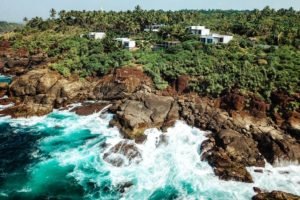
Minutes away from the hyped beach town of Unawatuna, lies the secluded Jungle Beach in Rumassala. The beach is hidden in the lush greenery offering striking views of the Rumassala forestry.
With soft sands and shallow waters, Jungle Beach is one of the most sensational stretches in Sri Lanka. It is a peaceful uncrowded spot ideal for swimming or even enjoying a picnic by the beach. After enjoying stunning seascapes, pop into a restaurant and dine on the catch of the day.
Do not forget to have a quick chat with a local if you are interested in exploring the mythical story behind the countless medicinal herbs still found on a hill in Rumassala. Hike up the Rumassala cliff to catch striking views of the Galle Fort. The sunset here is spectacular.
Getting there: It just a pleasant, hilly 2 km walk from Unawatuna (access by road is only via a side lane from the highway). You can also catch a tuk-tuk from Unawatuna.
Marble Beach
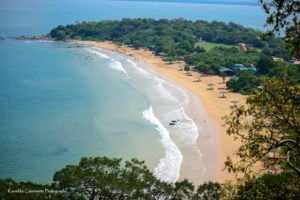
The waters at Marble Beach remain unbelievably calm and as clear as a shard of glass. The atmosphere here is so still that it gives you an illusion that you literally own it. The untouched, pristine beauty of Marble Beach makes it one of the best beaches in the country.
Nestled in Trincomalee, the sea here is home to large schools of tropical fish. Snorkeling is one of the famous activities at Marble Beach due to the fascinating sight of multi-coloured fish swimming in great doves. Go up the close by Diamond Hill to witness a mind-boggling panorama of the entire Trincomalee bay and beyond.
Getting there: Approximately 17 km south of Trincomalee, there is a turn-off on the left for Marble Beach. This is hard to miss as it is signposted just before the Kinniya bridge.
The Ultimate Sri Lankan Food Bucket List
Serendipity is the word for the gift of making happy discoveries by chance, and thus this little island was aptly dubbed “Serendib” by Marco Polo. When in Sri Lanka, you would definitely stumble upon such pleasant encounters. The island cuisine is undoubtedly one such delightful discovery that would keep you happy from your taste buds down to your toes. Vibrant, flavoursome and wholesome, Sri Lankan cuisine is a brilliant reflection of the island’s unique identity. When exploring the island, these dishes are a must try as you really cannot savour the essence of an authentic Sri Lankan experience without partaking in the local fare.
Rice and Curry
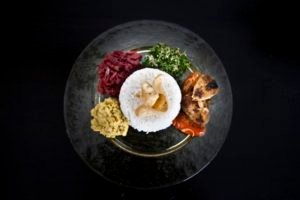
The islanders are a “rice-eating” nation. Their kitchens are usually basic, and yet out of them comes dish upon dish of tongue-tingling goodness: blackened pork in thick gravy, spicy coconut sambol, tempered potatoes, ruby-red beetroot curry and last but not least, crispy papadam. All these are served on a bed of steamed rice. That’s just a small selection of the choice of meat and vegetable dishes you’ll have to choose from. Eating with your hand is the norm of this part of the world so you are welcome to roll up your sleeves and dig in like a local. It is not rocket science, just gather up some rice with a bit of each curry and pop it in your mouth with your thumb.
Hoppers
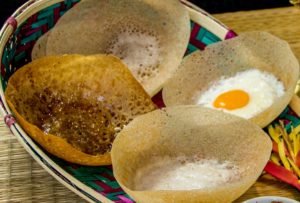
The Sri Lankan hopper or appa is described as a marriage between a French crêpe and an English crumpet. Despite such fancy descriptions, a hopper is simply a bowl-shaped pancake with a crispy outside and a spongy middle. Hoppers are prepared with a mixture of ground rice flour and coconut milk. A scoopful of batter is poured into a small hot wok and twirled around to spread. And after a few minutes, the hopper can be popped onto a plate and enjoyed with spicy onion relish. The egg hopper, or biththara appa,is made with an egg poured into the centre of the plain hopper. You can also try out hoppers dressed with sweet or savoury toppings that take your fancy.
Kottu
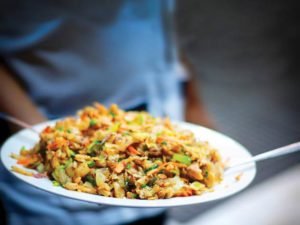
Called by the BBC as the food that makes you dance, kottu is one of the most rhythmic yet noisiest dishes you would find in Sri Lanka. Especially in Colombo, the “tak-a-tak-tak” of metal blades slicing and dicing the roti, could be heard from early evenings to late nights. If you visit one of the no-frill stalls set along the Galle Face Green you can witness the kottu chef or “kottu baas” as he is popularly known, in action. Chopped veggies, meat and shredded parata roti are tossed onto a flat sizzling grill and then the chef will rhythmically mix it up with the twin metal plates. If you are a cheese lover, get your kottu made with some cheese; the more cheese there is in the kottu, the better.
Jaffna crab curry

Being an island, Sri Lanka is blessed with the bounty of the ocean. And certainly the lagoon crab is a culinary delight of the island. Although an array of dishes could be plated up with the lagoon crab, so far the most sought-after dish is “Jaffna crab curry” due to its succulent melt-in-your-mouth nature which couples with a distinctive taste. Hailing from the Northern Peninsula of the island, Jaffna crab curry is a spicy dish oozing abundant flavours. You can either savour the crab curry with plain rice and other local curries or soak the spicy gravy of the crab in roast paan, a traditionally baked bread loved by the locals.
Pol roti and onion relish
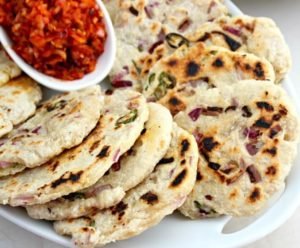
Made of coconut and flour, pol roti is circular in shape. The dough is kneaded, shaped into flat circles and then heated on a pan until both sides are crisp with brownish spots. Pol roti is usually eaten with spicy onion relish or lunu miris that gets your mouth burning. But soon you will taste the coconutty goodness of the roti that well balances the fieriness. Couple it with a steaming cup of ginger infused black tea and you’ve got yourself a winner!
Red Dot’s Top 25 Places to Stay in Sri Lanka
After weeks of excitement and anticipation, today we present you the top five properties to stay in Sri Lanka. These hotel stays are utterly unforgettable- top-notch service, delightful dishes and jaw-dropping locations. There’s no wonder that these five properties are the ones that our guests loved most this year. So let us present Red Dot’s Best Places to Stay in Sri Lanka, without further ado. Read on and check whether your favourite is on the list.
Ceylon Tea Trails
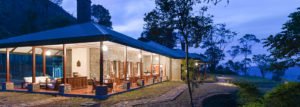
Dunkeld is one of five luxurious bungalow under the Tea Trails collection, perched high above the spectacular Castlereagh Lake near Dickoya and overlooking the lush green tea plantations of the Dunkeld Estate. It is a four-bedroom luxurious bungalow with a standalone cottage in Sri Lanka’s central highlands.
Clingendael
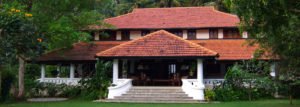
Clingendael is a luxurious five-bedroom villa situated in the Victoria Golf & Country Resort in Kandy, with magnificent views of the Victoria Reservoir and the golf course. Designed along the lines of a colonial-period Kandyan Wallauwa (ancestral house), this magnificent boutique hotel and villa exudes a stately grandeur yet is infused with cutting-edge technology. The creation of Clilngendael took five years with its Dutch owner painstakingly putting together original doors, windows, staircases, floorboards and furniture collected from old colonial houses. You don’t need to be a golfer to relish Clingendael’s terraced gardens, cascading waterways, verandas and tranquil setting.
The Dutch House
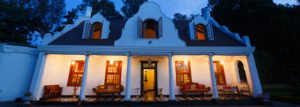
The Dutch House is perched on a hillock overlooking Sri Lanka’s southern highlands town of Bandarawela. This is a land of tea-covered hills, gushing waterfalls, mountain peaks and a fresher climate. This oft-praised boutique villa is set on a two-acre garden filled with fruit trees and flowering plants that attract many birds. It has reopened under new Sri Lankan owners who have created a distinct local feel with the use of antiques, art and soft furnishings. The villa has a satinwood and ebony staircase, boarded floors and a spacious verandah that lets you take in the mountainous scenery. It offers well-appointed bedrooms and an informal and relaxing ambience
Villa Talangama
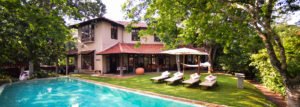
Villa Talangama has long been loved by Red Dot clients. It enjoys a quiet, unspoiled lakeside setting, seemingly a world away from the commercial heart of Colombo about half-an-hour away. The villa setting is best described as a `village in the city’ surrounded by paddy fields, lotus filled lakes and birds everywhere – perched on the veranda, flitting onto trees in the small and secluded garden, and even on the buffalo that relax on the lakeside and that provide a daily delivery of curd and treacle from the farmer next door. Villa Talangama is a meticulous Sri Lankan home.
Santana Wellness Resort And Spa

Santana Wellness Resort & Spa, one of Sri Lanka’s finest, promises to pamper the mind, body and soul in the comforts of the lush mountains in Digana. Spread across 48 acres of verdure overlooking the Knuckles and Hunnasgiriya mountain ranges, Santani is the perfect place to relax and take refuge from the chaos of day-to-day city life. The latest addition to the portfolio of wellness resorts in Sri Lanka, Santani specialises in ayurvedic treatments but also offers relaxation treatments
Camellia Hills
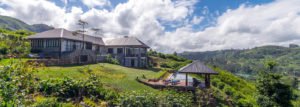
Overlooking the picturesque Castlereagh reservoir in Sri Lanka’s central highlands in Hatton, Camellia Hills is a modern tea bungalow that offers accommodation in five bedrooms. Decorated in soft colours and contemporary furniture, the villa is cosy and creates the perfect ambience for relaxation. The bungalow has been designed to provide guests with a spectacular view of the glass-like waters of the reservoir and surrounding tea plantation, whether you’re sitting in the spacious living area or enjoying a cup of tea in the balcony.
Wild Coast Tented Lodge
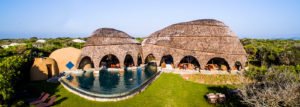
Wild Coast Tented Lodge ,located in the buffer zone of Yala National Park, is a luxurious campsite offering accommodation in 36 uniquely designed cocoons. It is the latest addition to Resplendent Ceylon’s collection of high-end hotels. Taking in natural colours and shapes of the area, this Relais & Châteaux resort is designed by a group of Dutch, English and Sri Lankan designers with the intention of seamlessly blending in man-made structures with the local landscape.
Kulu Safaris
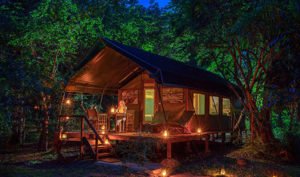
Kulu Safaris the pioneers of mobile tented safaris in Sri Lanka, are a respected wildlife company. Discuss your wildlife interests in advance and, whether birds, leopards or elephants, the Kulu team will personalise your game drives and take you on routes where you are more likely to see your favourite animals. The Kulu Safaris camping experience is highly recommended for nature lovers including families with children. Kulu Safaris follow a strict eco-friendly policy and avoids the use of plastics; uses solar energy for lighting and ensures that all waste material is removed from the campsite.
The Thinnai
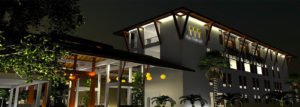
Situated in the quieter part of Jaffna town, The Thinnai is a 39-suite hotel with 58 bedrooms. The hotel is ideal for guests who are keen on exploring the Northern peninsula while enjoying modern day comforts. Thinnai which roughly translates to rest spot in English is inspired by the verandas found in traditional Jaffna houses which is commonly used by residents and visitors as a rest area where they can relax taking in the beauty of the garden while sipping a hot cup of tea.
Frangipani Tree
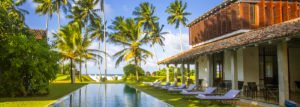
Frangipani Tree is a stylish, nine-bedroom boutique hotel by a secluded beach in Thalpe on Sri Lanka’s South Coast. Designed by Channa Daswatte, a protégé of Geoffrey Bawa, it is a tranquil and luxurious setting. Windows and verandahs that open onto the Indian Ocean, high-clay tiled roofs, cooling cement floors, courtyards with frangipani trees, white washed walls and interiors with contemporary timber and steel furniture make this a luxurious getaway. Sister property of Fort Printers in Galle’s 17C Dutch Fort.
Ulagalla Resort
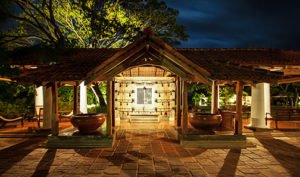
Ulagalla is one of Sri Lanka’s finest properties. This expansive holiday retreat spreads over 58 acres of lush woodland, paddy fields and the Ulagalla Reservoir in the rural village of Tirappane near Anuradhapura. Here is a resort that offers high levels of privacy. It was once the abode of a village chieftain. The original walawwa (ancestral mansion), which was built in 1885, still remains and has been renovated maintaining its traditional architectural features, and now houses the resort’s reception area. Accommodation is in luxurious villas scattered across the estate and overlooking paddy fields and reservoirs.
Taru Villas- Rock Villa
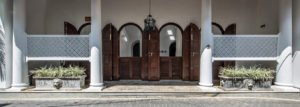
Taru Villas- Rock Villa is a fabulous 170-year-old Sri Lankan wallawwa with a fine reputation set on a two-acre coconut grove fronted by the spectacular sun-kissed beaches of Bentota, which are safe for swimming between December and April. This wonderful beach villa is is set back from the turquoise seas behind a 60 metre-wide growth of lush green mangroves and coconut palms providing much privacy. It is owned by Nayantara Fonseka (Taru), a renowned Sri Lankan lifestyle designer and creator of several other dream destinations on the island.
Villa Rosa
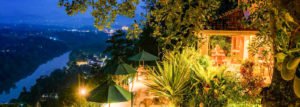
Villa Rosa is an enchanting guest house with great views over the Mahweli River close to the centre of Kandy. It offers excellent value and is a true taste of Sri Lankan living at its most serene, and has long been one of our favourite properties in Kandy. This charming little property has a subtle colonial flavour, a simple, intelligent ambience and a sense of shabby chic which is viewed with much affection by Red Dot travellers seeking to reconnect with life’s simple pleasures. More upmarket than a guesthouse, less style-obsessed than the more austere sections of the boutique market, Villa Rosa tempts you to relax outdoors on its private little patios and take in the soothing sights and sounds of the Mahaweli River below. Interior décor is simple and comfortable.
Chena Huts
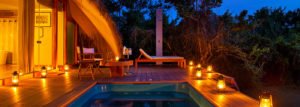
Chena Huts is an enchanting boutique hotel sprawled across seven acres of scrubland edged by the sea, just a five minute drive from the main entrance to Yala National Park.. The first boutique accommodation to be offered in the Yala area, Chena Huts is comprised of fourteen luxurious cabins, set apart from each other and shaded by trees to offer guests maximum privacy; a reception and dining area on the edge of the sea, and a pool and spa. The resort is innovatively designed: each building is in the style of a local village house, with a palm-thatched roof and artfully mottled walls, and winding wooden walkways lead between the cabins, surrounded on either side by the scrubland plants of the deep south.
Sri Sharavi Beach Villas
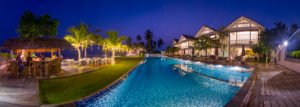
Sri Sharavi Beach Villas is a spick-and-span holiday retreat with a fabulous beachside setting in Mirissa on the South Coast. It consists of four well-appointed villas fronting a 45 metre swimming pool and the turquoise seas beyond, as well as two Garden Suites. These self-contained, two-storey villas are contemporary in design with bright and airy interiors, polished cement floors, high roofs, large windows that provides for spectacular sea views, and luxurious ensuite bedrooms. The villa butler offers a personalised service. A stay at Sri Sharavi is a relaxing and laidback holiday experience which is perfect even for families with children.
The Kings Pavilion
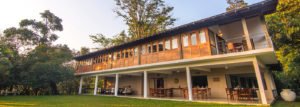
The Kings Pavilion is a nine-bedroom boutique hotel in a quiet residential area of Kandy, surrounded by greenery and birdlife, Kings Pavilion is a nine-bedroom boutique hotel. Spread across three acres with a large garden overlooking the Hunnasgiriya and Knuckles mountain range, this contemporary style hotel blends in seamlessly with its environment providing guests a comfortable place to relax.
Jetwing Vil Uyana
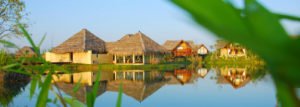
Vil Uyana is an ambitious and impressive development in Sri Lanka’s cultural triangle, more an exclusive rural holiday village than a hotel, and as such is highly recommended. Situated on extensive flatlands immediately to the west of the Sigiriya Rock, Vil Uyana – meaning a garden of ponds – is envisaged as a natural extension to the efforts of ancient Sinhala kings who developed and irrigated this area. Spread over 28 acres, at its heart is a wetland system consisting of paddy fields, marshes, and waterways reintroduced by the hotel. Individual dwellings, luxuriously appointed within, and blending seamlessly into the rural landscape, are located over lakes, marshes and paddy fields.
Aditya

Aditya is undoubtedly one of the finest beach side boutique properties in Sri Lanka. The Adityas is the common name for the 12 sun gods, said to dwell in the highest heavens. It is an appropriate name for a wonderful property designed both to de-stress and exhilarate. Aditya is designed with indoor gardens, waterways, and terraces with fine sea views. Refined interiors are stylishly decorated with art and antiques from Sri Lanka and further a field.
Amangalla

Amangalla takes pride of place within the ramparts of the 17C Galle Fort. Owned by the exclusive Aman group, it offers the most refined accommodation in Galle, its colonial-style buildings looking down soberly on the activity below. It consists of an amalgamation of buildings dating back over 400 years, once used as an HQ for the Dutch commander and his officers in the 17C and later as a billet for British soldiers. In 1865, the New Oriental Hotel was born and in its heyday on either side of the Second World War there were no more sought-after or daring parties in Sri Lanka. Aman Resorts then undertook a sensitive and complete refurbishment. From the day it opened, in 2005, it has offered excellent old-world luxury, superb food, arguably the best spa in the island and exceptional service.
Kahanda Kanda

Kahanda Kanda is a luxurious ten-bedroom boutique villa within easy reach of Galle, set on a 10-acre tea estate with views of the Koggala Lake in the distance. The tranquil setting is ideal for a relaxing holiday or even a romantic honeymoon. Beaches are beaches anywhere in the world but it is often said that the interior of a country is where the true spirit lies. Sri Lanka is no different and Kahanda Kanda provides the perfect example. Set on a hill amidst a working tea estate which slopes down to the Koggala Lake at one end, this stylish villa was built in 2000 as a private villa and is now an award-winning boutique hotel.
Fort Bazaar
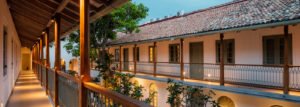
Fort Bazaar, which enjoys a prime position in Galle Fort, is a handsome 18-room luxury boutique hotel that was once a merchant’s house. Inspired by Portuguese heritage, this Sri Lanka heritage hotel is fast becoming one of the must-see places in the fort. Tiled with handmade Vietnamese floor tiles and cosy yet stylish furnishings, Fort Bazaar is one-of-a-kind. The 18 rooms at Fort Bazaar are categorised into 11 Bazaar Bedrooms, 4 Banyan Bedrooms, 3 Upper Suites, with an additional loft room.
The kandy House
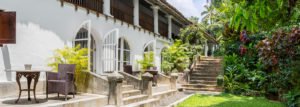
The Kandy House is a highly-sought after old colonial ‘Walauwa’ (ancestral mansion) in the spice-growing hills that surround Kandy. Its completion heralded what Sri Lanka’s hill-country-capital had been waiting for so long: a brilliant small boutique hotel capable of offering stylish and private accommodation and attentive personal service in a beautiful natural setting. The inspired refurbishment, with its white interiors, polished hardwood floorboards, jackwood staircase, Dutch-style antique furniture and careful injections of colour, has been a triumph. Channa Daswatta, one of Geoffrey Bawa’s protégés and Sri Lanka’s leading modern architects, provided the creative inspiration. The bedrooms are unquestionably the finest in Kandy.
Tri Lanka
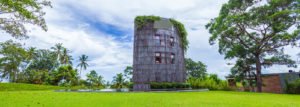
Tri Lanka surrounded by artfully-landscaped, lush greenery and positioned on the edge of spectacular Koggala Lake, is a haven for the mind, body and soul. Designed by award-winning architect Raefer Wallis and photographer Rob Drummond, Tri is a celebration of sustainability creatively combined with the ancient Greek mathematical theory of the golden ratio, a theory of design which creates shapes that the eye sees as perfectly beautiful. It is an ideal property for relaxation and escape and can be accessed by boat, which increases the feeling of worldly-detachment that you find at this retreat.
Living Heritage

Living Heritage is an exceptional property in a gorgeous setting on the fringes of Sri Lanka’s southern highlands. Much of the estate is untouched wilderness that attracts numerous birds, monkeys, deer and even the occasional elephant. Misty mountain peaks of the southern highlands form a beautiful backdrop. Living spaces are spread across a hillside with the accommodation at the top of the hill and dining and lounging areas below. The peaceful infinity swimming pool is a short stroll away. Living Heritage emphasises Kandyan architecture.

